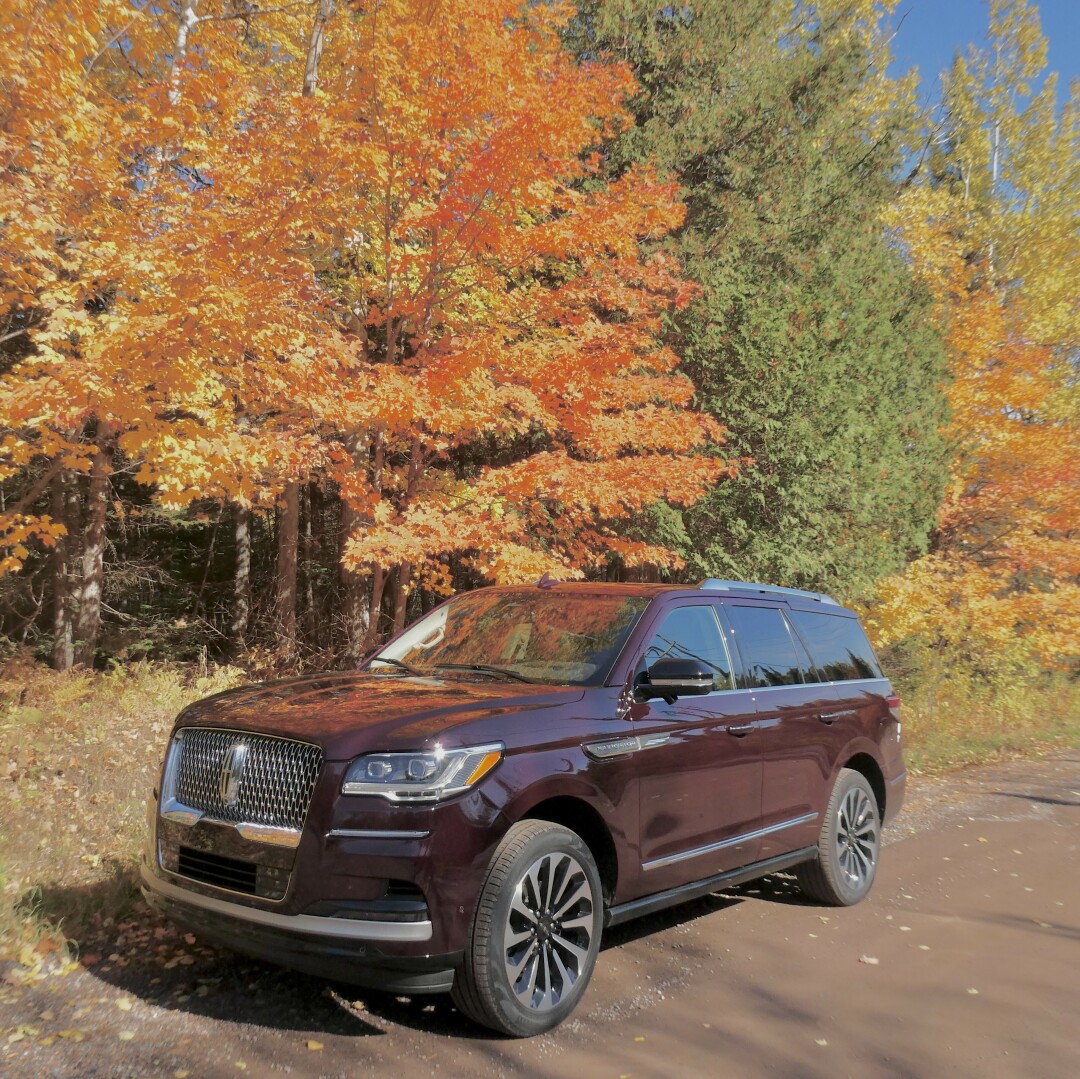Navigator, Corsair are Lincoln’s long and short of it

Lincoln Navigator still huge, with added luxury refinement. Photo by John Gilbert.
If Ford wanted to prove it could upgrade its gigantic Navigator to compete with the lofty status of the most luxurious, classy and large SUVs in the industry, they clearly hit their target with the new Lincoln Navigator. And possibly the biggest benefit of the Navigator’s reaching of the automotive pinnacle is the trickle-down effect on its other, smaller and less-expensive siblings, such as the Lincoln Corsair.
Now, we know there is a stopgap between those extreme Lincoln SUVs, and it is the Aviator, which actually looks almost exactly like a downsized Navigator. But we’re skipping right over the Aviator to the more compact Corsair, which is another in the company’s group that have earned nautical nicknames.
The Navigator is right up there with its main competitors, the Chevrolet Suburban, or even its sister ship, the Cadillac Escalade, both of which can soar above and beyond the $100,000 mark. Similarly, the Navigator is filled with opulent features and creature comforts, including what might be the softest leather on its bucket seats you will find.
Every imaginable feature is hooked up in the Navigator, and it is no surprise that the test vehicle I drove for a week amid the splendor of Northern Minnesota’s changing-foliage season, wore a sticker that says $107,390.
Its paint job was named Diamond Red, although it is a subdued, dark red that, in most daylight, looks like it might be black. Its rich, dark redness is another sign of its subtle class. That buys you a build quality that resembles a bank vault, and under the hood, instead of the obligatory V8, the Navigator is powered very efficiently by a 3.5-liter EcoBoost V8, with twin turbochargers, sending power to all four wheels through a 10-speed automatic transmission.
Inside, there are three rows of seats, and if you figure the therd row will generally be left folded flat to add to the already substantial storage capacity, there is a power switch that will order the third row setbacks to fold themselves down. While the Navigator also has an assortment of driving modes — which come up almost like a movie-quality array of light-show flashes on the large gauge screen — there is also an impressive audio system that fills the inside of the Navigator with glorious high-fidelity sound.
And there also are numerous items you could get along without, such as the ambient light and ground graphics that announce your arrival, and power running boards, which are not visible until you stop, then they slide out unobtrusively to give you a welcome step halfway from way up there to the ground, way down there.
It you need to haul six or seven, the N navigator fills the bill, with its second-row bucket seats complementing the front buckets, and a dual-pane moonroof giving you a great view of those changing leaves and the autumn full moons from either row. The turbo V6 runs as smoothly as any V8, and delivers V8-type fuel economy with EPA estimates of 16 city to 22 highway.
There are a lot of us, though, that figure the Navigator and other such monster trucks are too big to haul around and to give you vast towing and hauling capabilities that you may not need anymore, if your kids have grown and headed off to college or their own lifestyles.
For that group of most cost-conscientious people, the Corsair is the perfect way to go, and it does provide a lot of the features SUV buyers might clamor for, having once been exposed to them. In fact, if you selected a Corsair and you only had two, or occasionally four occupants, you might drive it for a few years before you realize you missed a few items that caused the Navigator to exist.
Like the Navigator, the Corsair wore the “reserve” designation after its Corsair 4x4 monicker. The Reserve means your vehicle includes a couple of the top option package groups. Under its Flight Blue Metallic paint, the Corsair feels and handles like the sporty runabout comparable to the best competitive midsize to compact SUVs.
It is powered by a 2.3-liter 4-cylinder EcoBoost, with an 8-speed transmission — plenty sufficient to distribute the spunky 2.3-liter’s power to all four wheels. With its smaller size, the Corsair has a sleek, artistic shape in silhouette, and doesn’t require the moving running boards, and with no third-row seat, it doesn’t need the power fold-down gizmo. Its smaller size also means light and agile handling, and Ford gives you a similar mode operation, which you can adjust with a knob to get slippery, normal, excite or conserve settings.
The conserve setting, similar to the Navigator, puts you in 2-wheel drive, which can save you a lot of gas money on a trip. We got what I thought was exceptional fuel economy, because I admit I got on the power numerous times to accelerate hard after entering the freeway up or down the North shore. On the slick computerized instrument screen, it indicated I was getting 28.4 miles per gallon on one particular tankful, driving mostly around Duluth, up and down all those steep hills.
I did also experiment with the steering wheel paddles in those situations, and was impressed that if you downshifted to, say, third gear, the transmission would hold that gear and restrain your speed while descending those steep hills.
